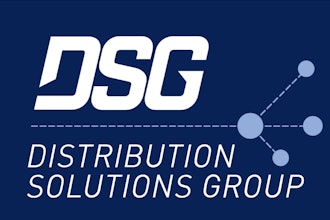This is the third article in the series What is your competitive edge? No, really! What is your competitive edge? To read the second article, “Size Matters: What is your Load Input Goal Number?,” please click here.
What is your competitive edge? No, really! What is your competitive edge?
Sounds like a simple question, and when asked, most answer pretty quickly and predictably.
If it is your goal to excel in a competitive market, continuous attention to systems, methods, and processes that offer a competitive edge is essential. These methods and processes must be things you and your team can focus on and control internally. External factors such as the economy, industry softness and such are uncontrollable and are therefore not part of this conversation.
The Competitive Edge topic this month is Target Account Management.
If I were a betting man, I would bet your company is engaged in some form of target account management or you have at least talked about it being something you want to do. The salient question is whether or not your sales team is being proactive or reactive with regard to target accounts.
Does this sound familiar … the fiscal year is about to end and you haven’t met your sales goals for the year. The management team is sitting around the conference table talking about ways to grow the business next year. Someone says “we need to come up with a target account program…” Everyone looks around the room at each other and says “sounds like a good idea.” So one of the focused initiatives for the next year is “Target Accounts.” You call a sales meeting with the sales team and the sales manager steps up to the podium and tells the sales team, “We didn’t make our numbers this past year we’re going to focus on Target Accounts this coming year. I need each of you to give me a list of your Target Accounts so we can focus on them.”
That might not be exactly how it goes, but speaking from experience it’s probably pretty close. In most cases Target Account Management is pretty shallow. The salesman identify their Target Accounts and gives the list to the sales manager. That list is compiled on a spreadsheet and perhaps you start tracking current sales against previous year sales to see if there is any growth. This list might be posted or reviewed on a monthly or quarterly bases. I speak from experience as this is how we did it in the beginning of my sales career within an industrial sales company. It was better than nothing and at least it gave some visibility into where we needed to focus our efforts as a team.
In an effort to go deeper into these Target Accounts, we upped our game and set out to manage Target Accounts in a more strategic, proactive manner. So what did we do? We first had to establish the definition of a Target Account. Ours was:
Target Account = Account that has significant growth opportunity, is strategic and key for the success of our company and that we have the opportunity to sell the full breadth of our products or services.
This is the “going deep” into the account part of the program. We all know that it is easier to sell into an existing account rather than capture a new one. As a company you need to leverage your past successes. It’s safe to say that most of your customers don’t even know the full breadth of your offerings. They know you by a hand full of your products or services, not necessarily the entire line card.
By critically analyzing the original Target Account list we learned that a majority of them did not meet our definition for a Target Account. Most failed to meet the definitional requirement of representing significant growth opportunity. What I have seen in other companies and were guilty of as well, is that automatically put our largest accounts on the Target Accounts.
The title of the article is: Profiling is OK when it comes to Target Accounts. So, what do I mean by this?
A good Target Account Management Program starts with profiling the account to determine if it meets your definition to ensure that you have a true Target Account list to manage proactively.
There are other variables you could use to determine Target Accounts, but I am a believer in KISS so here are 4 areas you can consider to determine if an account should be a Target. Profile the account and answer these questions.
1.What is the Current $ Volume?
2.What is the Potential $ Volume?
3.What are the Current Product/Services the account buys?
4.What are the Potential Product/Services the account might buy?
Let’s first start with the current and potential volume:
Current $ Volume: Consider a grading scale of A,B,C,D for each account. Example: A = >$500,000 year, B = $250,000 to $499,000 year, etc.
Potential $ Volume: Use a similar grading scale as Current $ Volume.
As an example, ABC Chemical is currently buying $150,000 a year from us, but potentially could be buying $600,000 a year. That would put ABC Chemical into the CA matrix category. C for Current $ Volume and A for their Potential $ Volume. Complete the exercise and you should have all the accounts profiled and organized by category groups.
Category Examples:
DA = Currently a D but Potentially an A (High Growth Target Account)
BB = Currently a B but Potentially a B (Maintain Account)
CA = Currently a C, but Potentially an A (High Growth Target Account with leverage)
AA = Currently an A, but Potentially an A (Key Account)
So which are your Target Accounts? They are the accounts that fall into the CA, DA, DB categories. Focus on the CA accounts as they are currently doing business with you and will be easier to leverage for additional products or services.
Once you have categorized your accounts and determined the Target Accounts, do a product/service profile on each. List the current products you are selling to them and then a list of potential products you believe you can sell to them. This will provide a road map to focus on and allow you to be proactive with that account. Look for ancillary products or services to sell. If they are already buying your saw, they should also be buying your saw blades.
Here is an example of how to categorize the accounts:
So, profiling is OK when it comes to Target Accounts. An effective proactive Target Account program begins with profiling. Establish the definition of a Target Account. Put accounts into a category matrix and then select the accounts that are in the growth category. Profile the current and potential products which will give you a road map of what you should be focused on. Once you have gone through the process, established Target Accounts and have profiled them for products you are going to be proactive with, you’ll want to put all of this in some type of system to track and monitor the performance. It can be as simple as the excel example above with action items and results monitoring. Most companies today have some sort of a CRM system, look at incorporating this functionality into it.
The Takeaway: Go through the process described above with your sales team. Get them involved so they understand the value and the reward of getting a true handle on their Target Accounts and where and how they should be spending their time to gain a competitive edge. This will be an eye opener. You’ll be better and ready for a focused, proactive pursuit for growth.
Take control of your sales process and put focus on this simple, yet typically overlooked, philosophy. And give your team a Competitive Edge.
Be on the lookout for next month’s competitive edge article: Profiling Is OK, When It Comes To Target Accounts.
To read the series' second article,"Focus On The 180: Use Front End Sales Management To Gain A Competitive Edge," click here.
Brian Gardner is the Founder of SalesProcess360, a coaching, consulting, and speaking company focused on helping industrial sales companies gain a competitive edge. Gardner has been involved in industrial sales for over 30 years. In fact: he was born into it. His father owned an industrial sales rep/distributor company serving the Gulf Coast in the chemical, refinery, and oil & gas industries, and after a brief stint at Texas Instruments, Gardner returned to the family business in inside sales. After 15 years of working through the ranks, Gardner served as VP of Sales until 1999, when he co-founded an industrial sales focused CRM software company called Selltis. Gardner recently started SalesProcess360 to take his passion for sales process improvements to the industrial sales world. To learn more, or to contact Gardner, please visit www.salesprocess360.com.






















